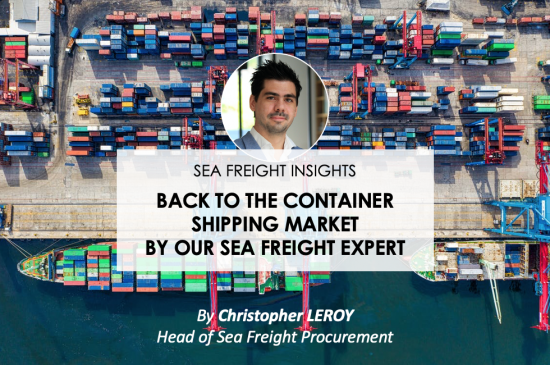Nearly eight weeks after the long-awaited Chinese New Year 2021, the results are far from shippers' expectations in terms of rates, service, and lead time on the containerized transport market, according to our expert's analysis.

After a recovery supported by a strong backlog before the new year, mid-February and during March, the market did not experience the long-awaited decrease in freight rates, as VLSFO (Very Low Sulpher Fuel Oil) prices have been rising for the last few months, and almost all carriers have announced a revaluation of the BAF (Bunker Adjustment Factor) for the second quarter, thus limiting the decrease for April.
The resurgence of the COVID epidemic in some western countries and the various declaration of new quarantine measures have contributed to maintaining uncertainty in the market. The persistent congestion at the Port of Los Angeles is a significant illustration of the imbalance. We can see that, on one hand, an Asian production tool at almost full capacity and, on the other hand, a still complex sanitary situation do not allow fluidity of operations at destination and an import/export balance. These elements have only allowed a moderate decrease in the SCFI (Shanghai Container Freight Index) for a few weeks and then increased in the first week of April to reach a level similar to that of December 2020 (Comprehensive Index 2652 USD / 20 DR as of 09/04/2021, Shanghai Shipping Exchange).
This was without taking into account the blocking of the Suez Canal on 23 March for more than a week, blocking imports from the East on the one hand and the return of empty or full equipment on the other. Even if this maritime passage only sees 10% of the world maritime market in transit, it is 100% of the Asian traffic to the Mediterranean and Europe that was paralyzed, forcing shipowners to review the rotation of vessels in order to limit the operational impact of this unplanned stop in routing. The direct consequence of this was an increase in the transit time of vessels en route, and an increase in the backlog at major transshipment ports such as Singapore or Colombo.
With the various announcements of blank sailing in the coming weeks, in the longer term, the availability of equipment and the lack of capacity may again impact the regular containerized lines. We are confident that the repositioning of vessels together with the improvement of the sanitary context will lead to a positive evolution in terms of decongestion of terminals, repositioning of equipment, and reduction of transit times.
With its expertise in transport, Bansard International will support you with the latest market news and is at your disposal for a personalized study, in order to best meet your needs and propose the best solution for your supply chain.

Christopher LEROY
Head of Sea Freight Procurement



